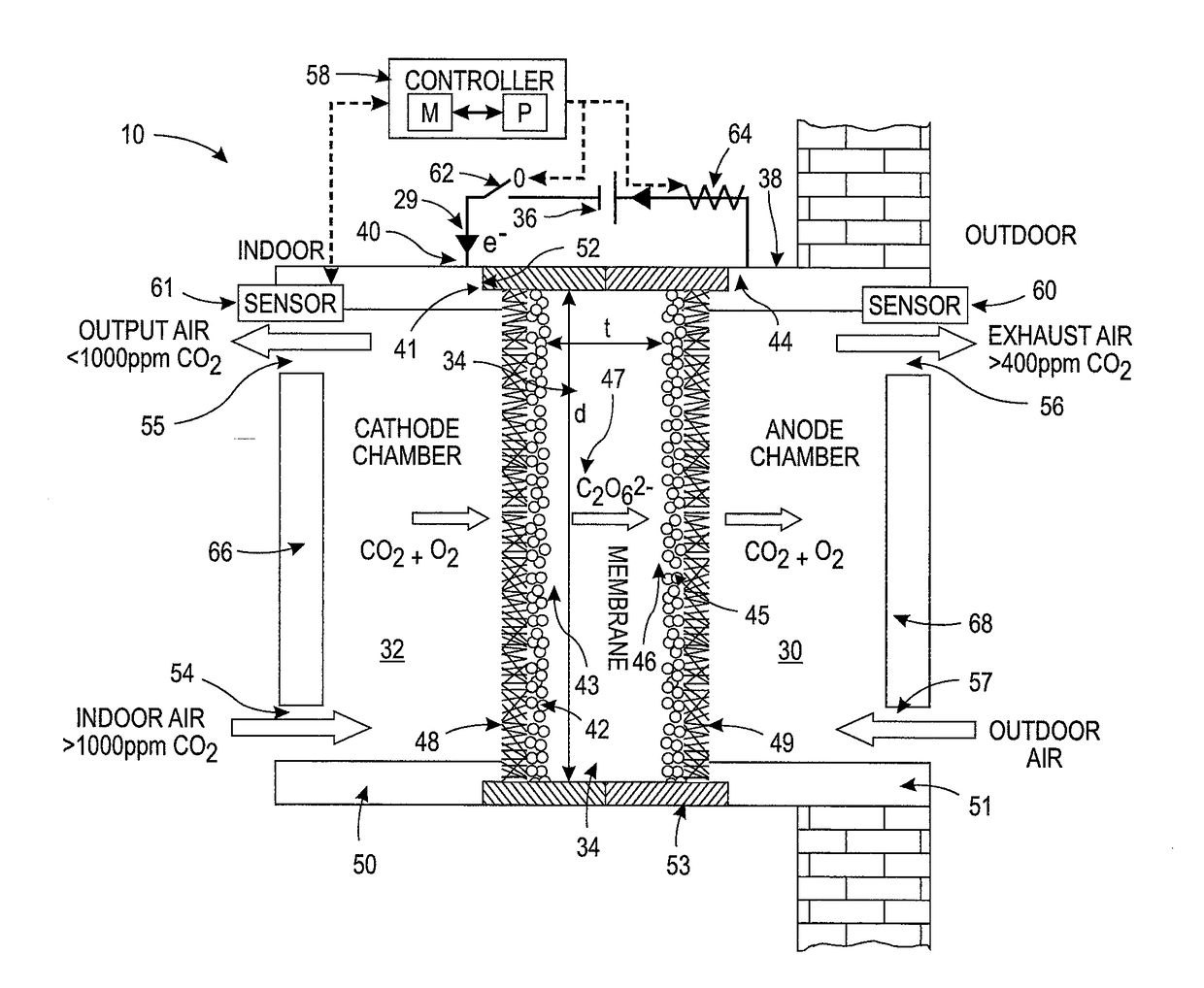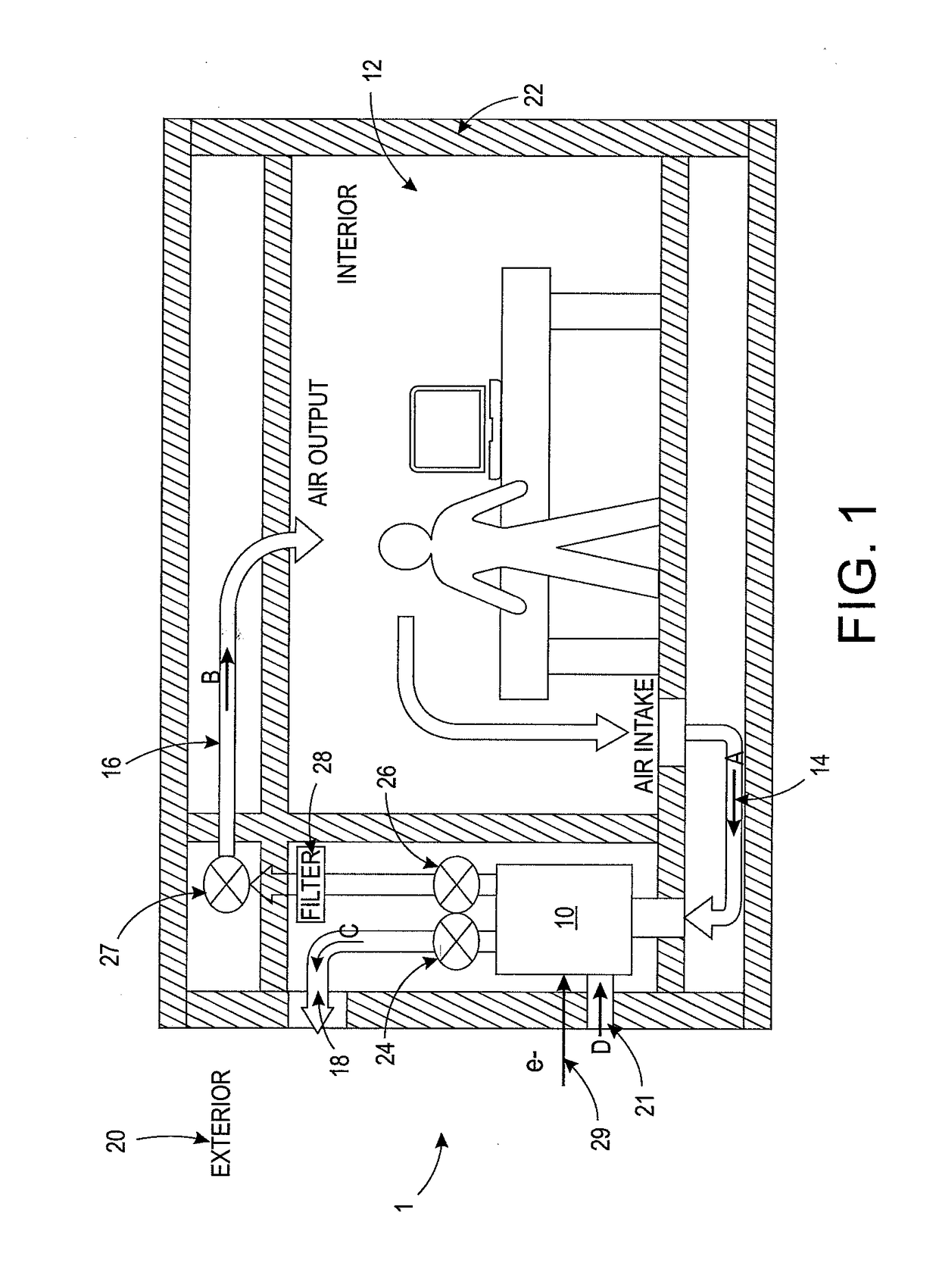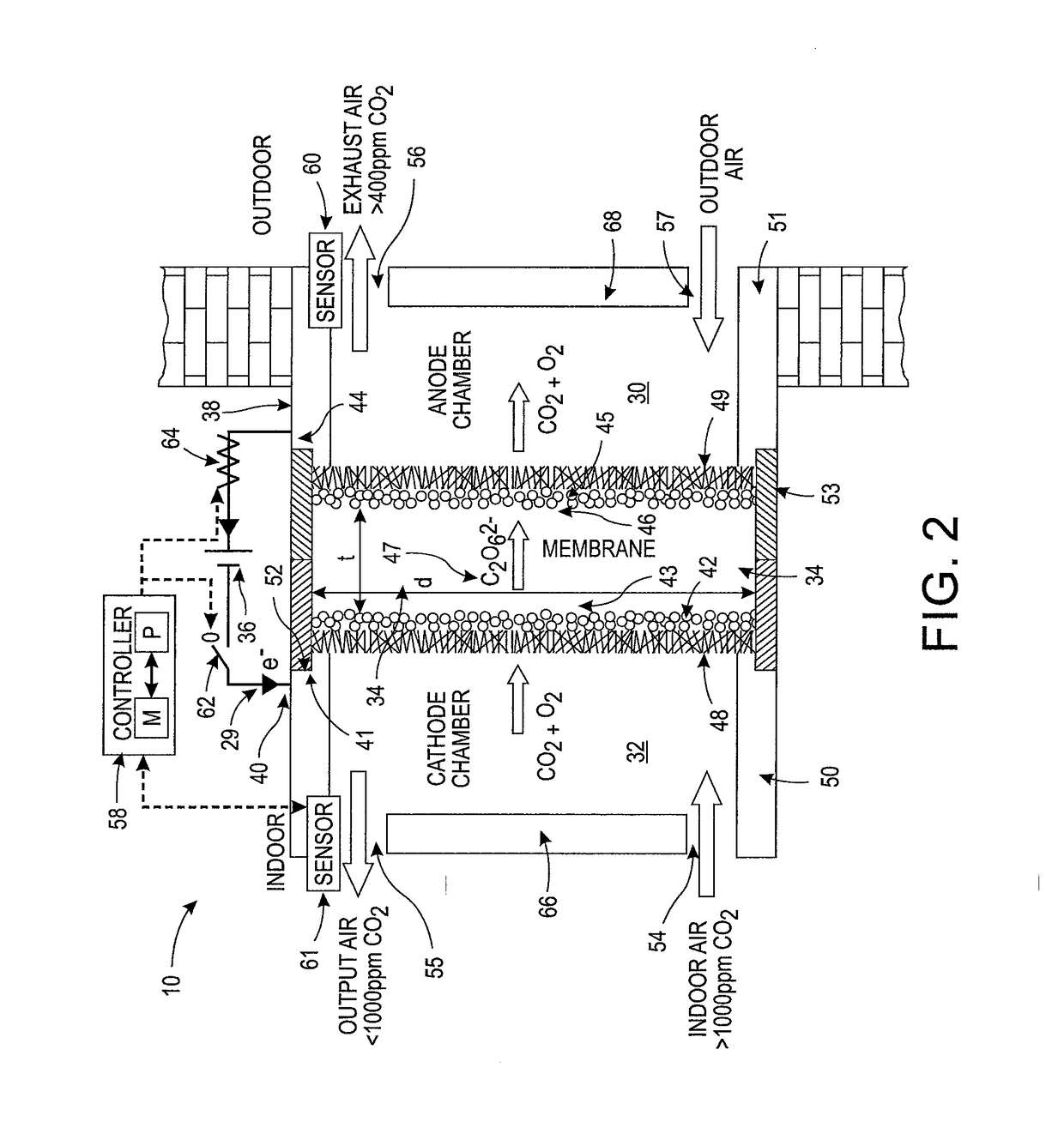System and method for adjusting carbon dioxide concentration in indoor atmospheres
a technology of carbon dioxide concentration and indoor atmosphere, which is applied in the direction of membranes, heating types, separation processes, etc., can solve the problems of high energy cost of what is largely building cosub>2, significant amount of energy wasted in excessive ventilation to dilute indoor air, and achieve the effect of reducing a partial pressure of carbon dioxid
- Summary
- Abstract
- Description
- Claims
- Application Information
AI Technical Summary
Benefits of technology
Problems solved by technology
Method used
Image
Examples
examples
[0133]Electrochemical Device for Carbon Dioxide Removal with Formate Ions
[0134]A prototype electrochemical device (1.27 cm2) 10 configured for removal of CO2 and operating at room temperature (10-40° C.) is assembled as shown schematically in FIG. 9. The membrane is formed of an anion-exchange membrane equilibrated in either formic acid (96%) or potassium formate (0.5 M), and catalyst layers were used at both electrodes (Pt, 4 mg / cm2). The polymer electrolyte membrane enables a high formate ionic conductivity (at least 1×10−3 S / cm), and the commercially-available catalyst used reduces CO2 to formate and re-oxidizes formate to CO2 gas with a high faradaic efficiency (>20%).
[0135]In another implementation, the membrane is formed of poly(1-vinylimidazolium), according to the method described in U.S. Pub. No. 20160064763, published Mar. 3, 2016, entitled APPARATUS AND METHOD ASSOCIATED WITH REFORMER-LESS FUEL CELL, by Saroj Sahu using a method described for the synthesis of poly(ionic) ...
PUM
| Property | Measurement | Unit |
|---|---|---|
| Partial pressure | aaaaa | aaaaa |
| Partial pressure | aaaaa | aaaaa |
| Bond energy | aaaaa | aaaaa |
Abstract
Description
Claims
Application Information
 Login to View More
Login to View More - R&D
- Intellectual Property
- Life Sciences
- Materials
- Tech Scout
- Unparalleled Data Quality
- Higher Quality Content
- 60% Fewer Hallucinations
Browse by: Latest US Patents, China's latest patents, Technical Efficacy Thesaurus, Application Domain, Technology Topic, Popular Technical Reports.
© 2025 PatSnap. All rights reserved.Legal|Privacy policy|Modern Slavery Act Transparency Statement|Sitemap|About US| Contact US: help@patsnap.com



